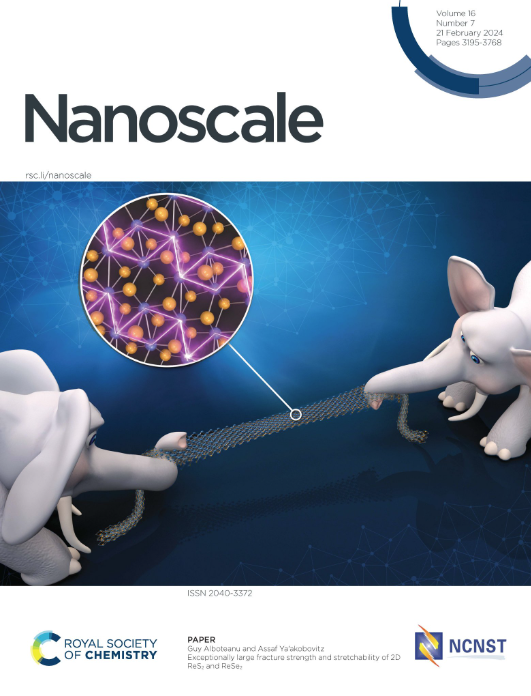A parametric study on CoFe-based ferrite and alloy nanoparticle synthesis
IF 5.8
3区 材料科学
Q1 CHEMISTRY, MULTIDISCIPLINARY
引用次数: 0
Abstract
Magnetic nanoparticles (MNPs) have received great attention during the last two decades thanks to their potential uses in various application fields such as high-density recording media, magnetic separation and biomedical domains. In this work we focus on the exploratory synthesis of cobalt ferrite and iron-cobalt nanoparticles through thermal decomposition wet-chemical pathways. Several parameters were examined in order to elucidate their impact on the composition, morphology and magnetic behavior of the produced nanomaterials. A range of metallic precursor types is first investigated, with a subsequent focus on the case of acetylacetonate salts. In addition, the reduction of CoFe2O4 to FeCo by employing a salt-matrix annealing stage is explored. Polyol and H2-mediated methods are utilized to prepare FeCo alloy NPs in a direct manner. Multi-core nanostructures were also synthesized, which are very promising for magnetic resonance imaging and magnetic hyperthermia (MH) applications. The post-synthesis thermal treatment helped to convert ferrites to iron-cobalt alloy, with the expense of significant particle size increase and aggregation. Alloy particles formed in one-pot way by polyol routes had > 100 nm size and hexagonal shape, while hydrogen-assisted reduction led to monodisperse ~ 30 nm NPs with remarkable MH activity.cofe基铁氧体及其合金纳米颗粒合成的参数化研究
磁性纳米颗粒(MNPs)由于其在高密度记录介质、磁分离和生物医学等领域的潜在用途,在过去的二十年中受到了广泛的关注。在这项工作中,我们重点探索了通过热分解湿化学途径合成钴铁氧体和铁钴纳米颗粒。研究了几种参数对纳米材料的组成、形貌和磁性行为的影响。首先研究了一系列金属前体类型,随后重点研究了乙酰丙酮盐的情况。此外,还探讨了采用盐基退火阶段将CoFe2O4还原为FeCo的方法。多元醇和h2介导的方法直接制备了FeCo合金NPs。多核纳米结构在磁共振成像和磁热疗(MH)等领域的应用前景十分广阔。合成后热处理有助于铁素体转化为铁钴合金,但代价是晶粒尺寸明显增大和团聚。多元醇路线一锅法形成的合金颗粒具有>;而氢辅助还原得到单分散的~ 30 nm NPs,具有显著的MH活性。
本文章由计算机程序翻译,如有差异,请以英文原文为准。
求助全文
约1分钟内获得全文
求助全文
来源期刊

Nanoscale
CHEMISTRY, MULTIDISCIPLINARY-NANOSCIENCE & NANOTECHNOLOGY
CiteScore
12.10
自引率
3.00%
发文量
1628
审稿时长
1.6 months
期刊介绍:
Nanoscale is a high-impact international journal, publishing high-quality research across nanoscience and nanotechnology. Nanoscale publishes a full mix of research articles on experimental and theoretical work, including reviews, communications, and full papers.Highly interdisciplinary, this journal appeals to scientists, researchers and professionals interested in nanoscience and nanotechnology, quantum materials and quantum technology, including the areas of physics, chemistry, biology, medicine, materials, energy/environment, information technology, detection science, healthcare and drug discovery, and electronics.
 求助内容:
求助内容: 应助结果提醒方式:
应助结果提醒方式:


